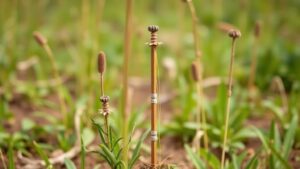How to Identify Tellurides and Other Gold-Hosting Minerals in the Field
How to Identify Tellurides and Other Gold-Hosting Minerals in the Field
Identifying tellurides and other gold-hosting minerals is a critical skill in mineral exploration and mining. This article aims to provide field geologists and enthusiasts with effective strategies and techniques for recognizing these valuable minerals. We will explore various gold-hosting minerals, with particular attention to tellurides, their characteristics, and methods for identification.
Understanding Tellurides
Tellurides are a specific group of minerals that contain the element tellurium combined with one or more metals, typically including gold, silver, and others. e minerals are often found in hydrothermal ore deposits associated with other sulfide minerals.
Common telluride minerals include:
- Calaverite (AuTe2): A gold telluride with a distinct golden yellow to brassy appearance.
- Nuggetite (Ag,Au)Te2: Another gold-silver telluride often characterized by its metallic luster.
- Petzite (Ag3AuTe2): A silver-gold telluride that commonly occurs alongside calaverite.
Field Identification Techniques
Identifying tellurides and other gold-hosting minerals in the field requires a combination of observational skills, knowledge of mineral properties, and practical techniques. Here are some effective methods:
1. Visual Inspection
Field geologists should start with a detailed visual inspection of rock outcrops. Key indicators of tellurides include:
- Color: Look for bright metallic yellow or brassy colors, which can indicate the presence of tellurides such as calaverite.
- Luster: A high metallic luster suggests the presence of valuable minerals.
- Texture: Telluride minerals often exhibit a granular or crystalline texture.
2. Hardness Testing
Using the Mohs hardness scale, one can quickly gauge the hardness of the minerals being examined. For example, calaverite has a hardness of around 2.5 to 3, making it softer than many common minerals but distinct from others like quartz.
3. Acid Tests
Conducting simple acid tests can help differentiate between minerals. For example, the presence of sulfur in some sulfide minerals will react differently than tellurides in a weak hydrochloric acid solution, allowing for further identification.
4. Check for Accompanying Minerals
Identifying the surrounding mineralogy can provide context for the presence of tellurides. often occur alongside sulfides such as chalcopyrite, pyrite, and galena. Notably, these associations can indicate that youre in proximity to gold-bearing geology.
Real-World Applications
Several mining districts around the world illustrate the successful identification of tellurides and gold-hosting minerals:
- Californias Mother Lode District: Known for rich deposits of tellurides along with quartz veins. Miners utilized visual inspections and chemical assays to target high-grade ore bodies.
- Canadas Golden Triangle: This region has produced significant gold and telluride minerals, particularly in hydrothermal vein systems. Advanced geological mapping accompanied field identification techniques to maximize exploration success.
Conclusion and Actionable Takeaways
Identifying tellurides and other gold-hosting minerals in the field is a multifaceted process that combines visual inspection, hardness testing, acid tests, and an understanding of mineral associations. By honing these skills and applying them effectively, geologists and mineral enthusiasts can enhance their ability to locate valuable resources. Always remember:
- Practice field identification regularly to gain experience.
- Invest in basic mineralogy and geology tools for accurate testing.
- Network with industry professionals to share findings and techniques.
With persistent effort and attention to detail, anyone can become adept at identifying tellurides and other gold-hosting minerals in the field, ultimately contributing to successful exploration and mining endeavors.



